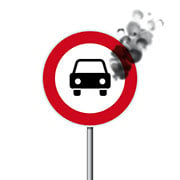Local offices: essential for company knowledge
Brand and product names… what do you do with them when moving into new markets? Do you leave them as is? Or do you adjust, translate or come up with a new name altogether?
This is a big question with big consequences. Get it right, and you can see big returns. Get it wrong, and you get a big fail.
Your localization partner, with local knowledge and expertise, can help identify what would work, what not and why.
At the same time don’t underestimate the role your own local offices can play. After all, they know their target audience and sales channels best.
Get the best of both worlds
Not only does your localization partner have the insights and inroads for helping you set up a system for locally validating your brand and product names with your local colleagues, together they can also combine all linguistic and commercial information needed to make the right decision.
Below are a few examples of how a little bit of localization could have gone a long way…


When Audi released the high-end electric car e-tron, they unfortunately didn’t do their research on the name in all markets and were receiving all kinds of strange comments on social media about the name in France. Why? The French weren’t too keen being seen driving around town in a car with the French word for ‘excrement’ on the back. The name ‘e-tron’ is very similar to the word ‘étron’, the not so luxurious word for that particular bodily function.


There are also quite a number of fails of Western companies launching brands and campaigns in China.
Here are two well-known examples:
Mercedes-Benz launched in the Chinese market using the brand name ‘Bensi’. This was bad advice as it translates to ‘rush to die’.
They eventually decided to call themselves ‘Bēnchí’ or 奔驰 which means ‘dashing speed’. Lots better!


Coca-Cola is one of the most recognized brands in the world. Unfortunately, it was off to a rough start in China. They translated their name to 蝌蝌啃蜡 which roughly means ‘tadpole chewing wax’. Not a good taste.
Want to make sure your message hits your target – in any language?
Yet not sure where to start exactly with localization?
Here are 5 Do’s and Don’ts that you need to know.





